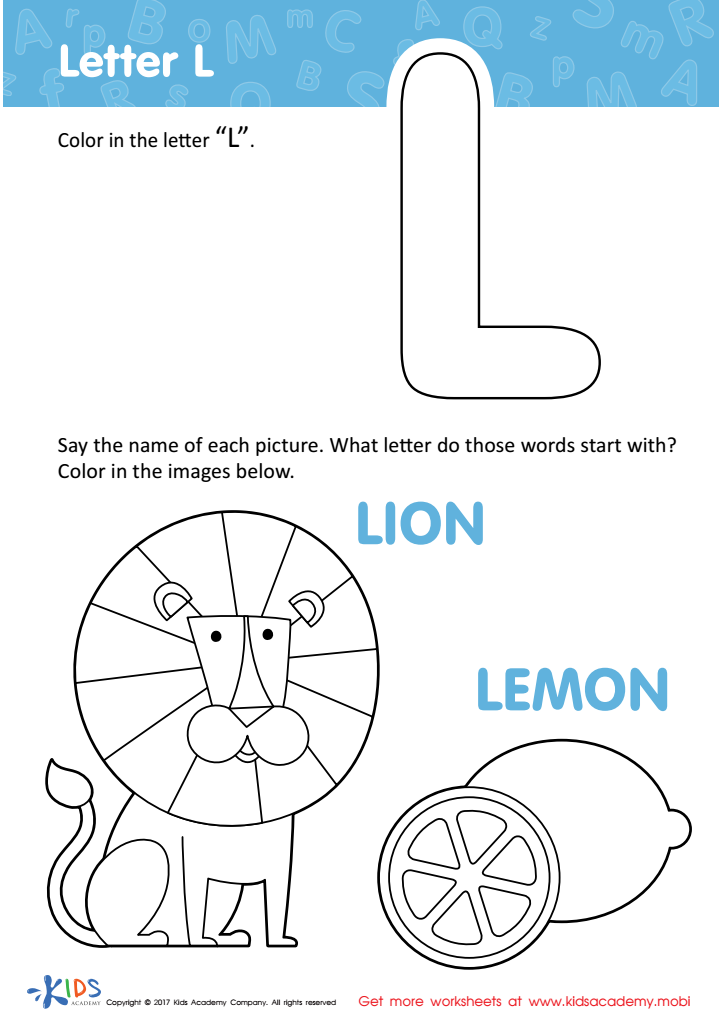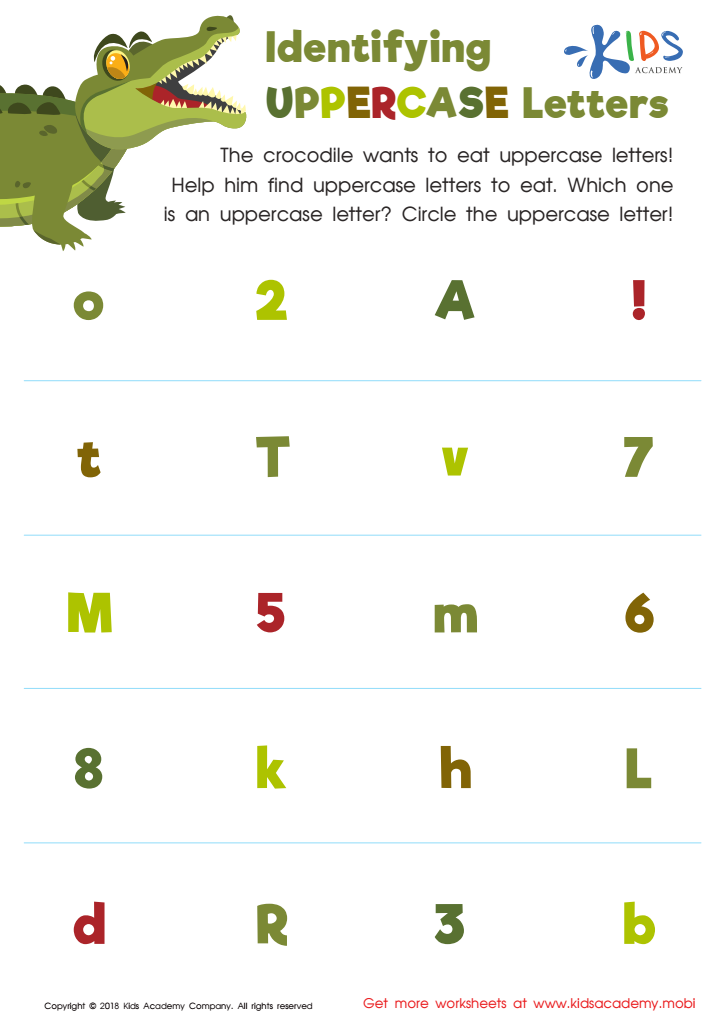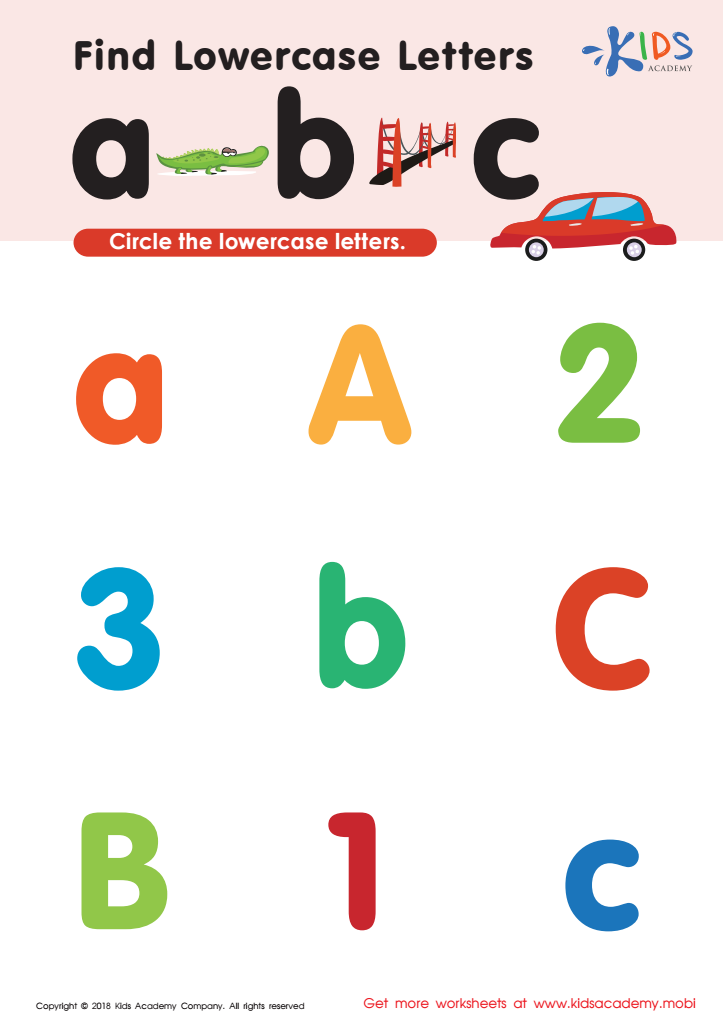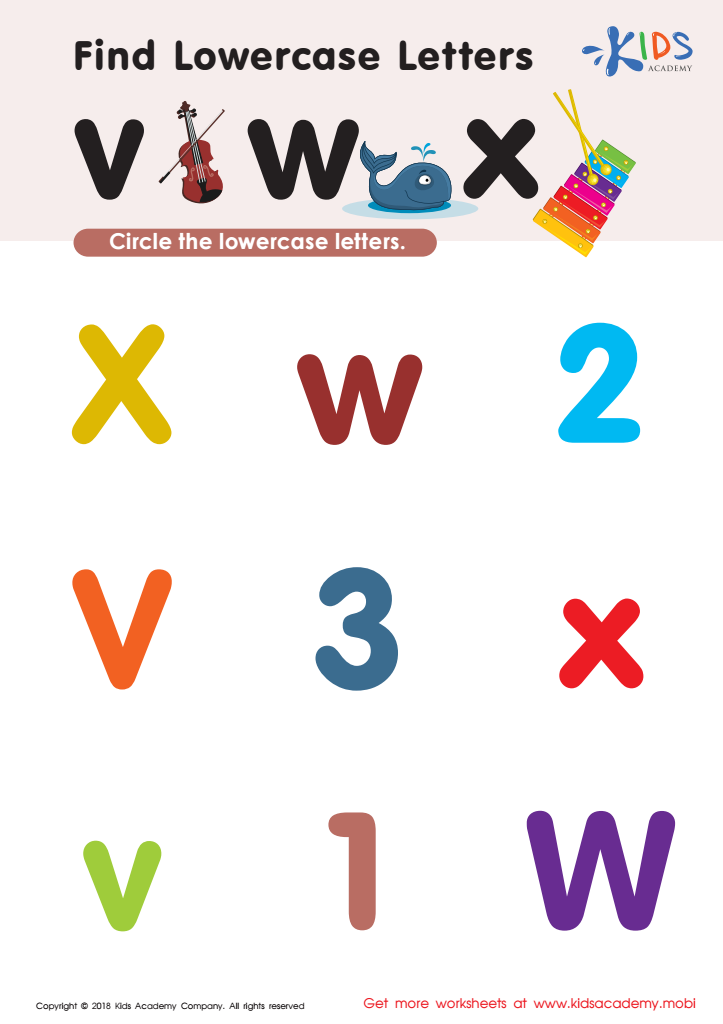Visual discrimination skills Normal Letter Recognition Worksheets for 4-Year-Olds
5 filtered results
-
From - To
Enhance your child's visual discrimination skills with our engaging Normal Letter Recognition Worksheets designed specifically for 4-year-olds! These worksheets focus on helping young learners differentiate between letters and improve their ability to recognize shapes and colors. Through playful exercises and fun illustrations, children will develop essential pre-reading skills with ease. Our user-friendly format encourages parent interaction and support, making learning a delightful experience. Whether in the classroom or at home, these worksheets provide a valuable resource for nurturing your child's love for learning. Let your little one embark on a visually stimulating journey with our expertly crafted letter recognition activities.


Letter L Coloring Sheet


Find Uppercase Letters A, B, and C Worksheet


Identifying Uppercase Letters Worksheet


Find lowercase letters a b c Worksheet


Find Lowercase Letters v w x Worksheet
Visual discrimination skills and normal letter recognition are vital components of early childhood literacy that parents and teachers should prioritize for 4-year-olds. At this stage, children begin to develop the foundational skills necessary for reading and writing. Visual discrimination refers to the ability to notice differences and similarities in shapes, colors, sizes, and patterns, which is essential when young learners identify letters. Strong visual discrimination helps children differentiate between letters that may appear similar, such as ‘b’ and ‘d’ or ‘p’ and ‘q’, preventing future reading challenges.
Normal letter recognition, on the other hand, is the ability to recognize letters by their shapes, names, and sounds. This skill significantly enhances a child’s overall literacy development as they start to connect letters to phonemes, forming the groundwork for reading. When parents and teachers nurture these skills, they are effectively fostering a child’s motivation, confidence, and enjoyment of reading.
Investing in visual discrimination and letter recognition can directly impact a child's academic success, supporting seamless transitions into more complex literacy tasks. Understanding these connections emphasizes the importance of integrating fun activities that promote these skills in everyday learning experiences. Ultimately, focused attention on this developmental area helps children thrive in their educational journey.
 Assign to My Students
Assign to My Students





















